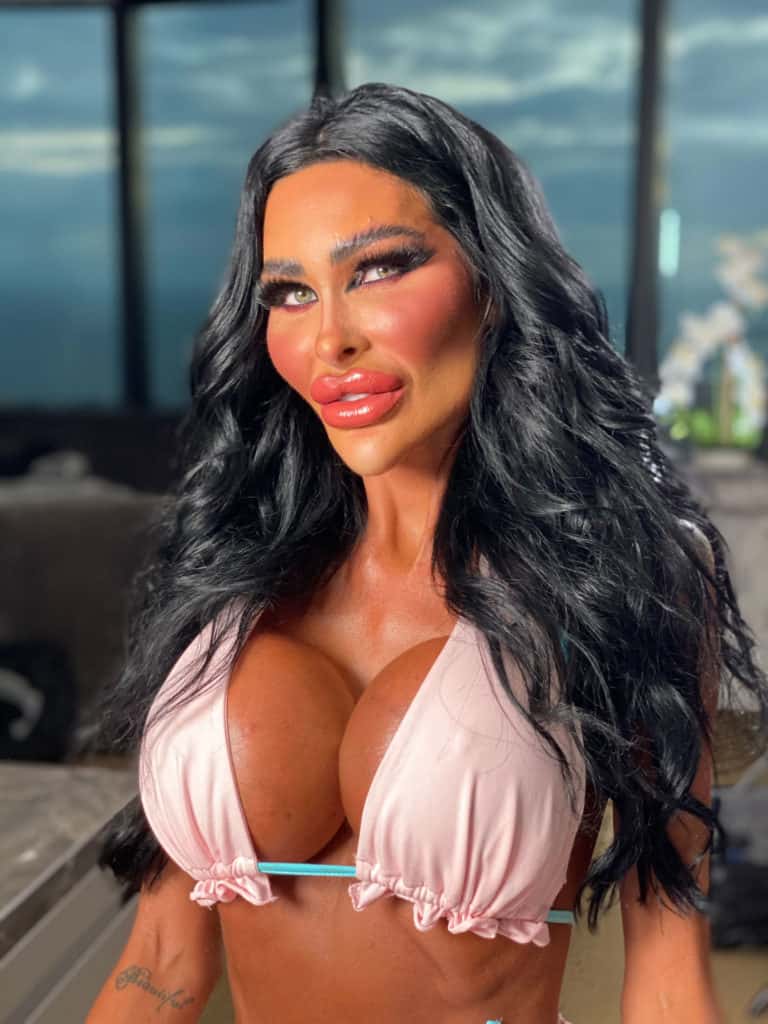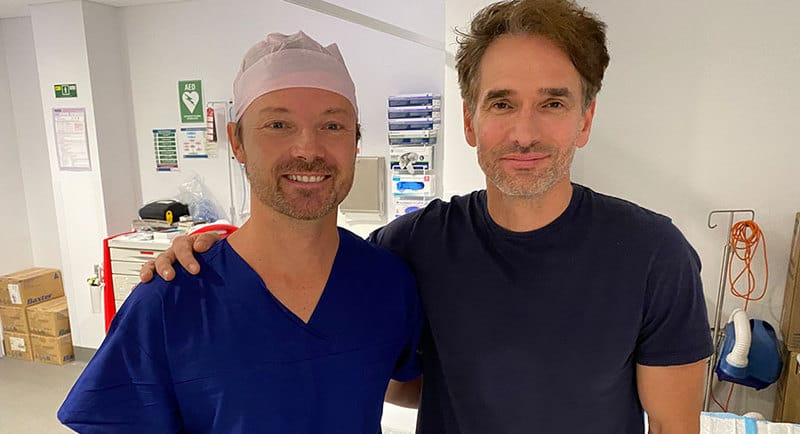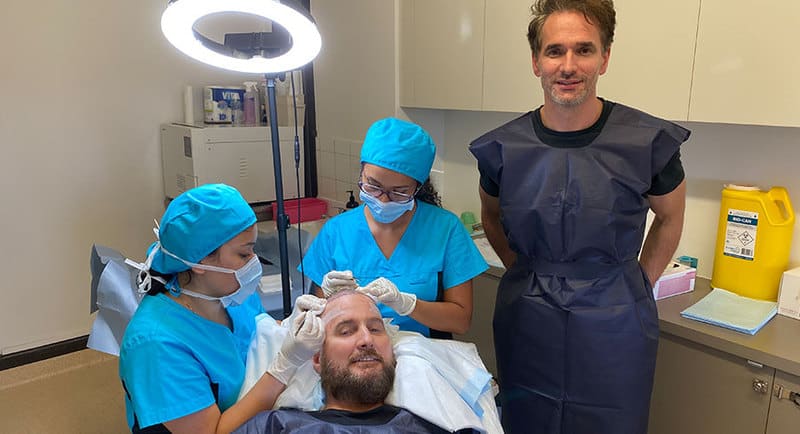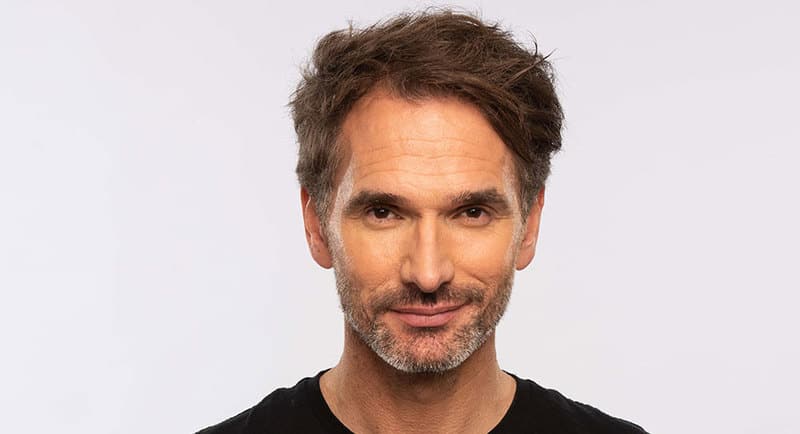Todd Sampson returns to TV for his new two-part documentary Mirror Mirror on 10 and 10 Play. The doco will explore the societal crisis of body image dissatisfaction and the manipulative trillion-dollar industry that profits from it.
Mediaweek caught up with Sampson to find how he went about covering such a deep topic and then turned it into must watch TV.
Over the two nights, Sampson will lift the lid on the beauty industry and explore how people’s obsession with looks is exploited by the fitness, diet, and pornography industries and how an image-obsessed culture can easily lead to disorder.
Sampson said that the project took eight months to complete but that he had been mulling the idea since his work on the ABC TV series Redesign My Brain. Sampson said that during the making of the film, production and postproduction were done in parallel.
“We were editing as we went, almost like a film. We would shoot and then we’d come back and edit stuff together and look at it and see what worked and what didn’t work. And so, it was not a relay race or a normal consecutive process.”

Tara Jayne
While some might draw comparisons between Mirror Mirror and Sampson’s most recent television work for 10, Body Hack, Sampson said that they are very different ideas.
“I wanted to have a pause on Body Hack. I had done 19 episodes or something, I wanted to do something different. But I also wanted to use my voice for something that is a broader societal concern, instead of me adventuring around the world. And this topic is such an important, often invisible crisis in society globally, I just wanted to lend my voice to it.”
The event will happen over two nights with each episode also split up into chapters, Sampson said that he originally wrote the documentary almost as a screenplay.
“It’s multiple stories of people living really in the middle and on the edge of this crisis. The goal is to try and give different voices and perspectives around one problem, and that problem is the beauty ideal and how advertising, social media, television, and movies amplify the issue that we’re having with discontent.
“In some ways, the episodes split into a very simple problem and solution series. The first episode really sets up a lot of the challenges that we face from diverse voices. Then the second one really narrows down to how bad this can get and what are the solutions.”

Dr. Francesco Fascetti and Todd Sampson
While Sampson physically participated in small segments like when he aged his skin by three years in one month by using an anti-aging cream, the documentary is held together by powerful case studies. When asked how he selected this group of people, Sampson said that he was guided by a core goal.
“The initial filter for the stories was diversity. Not because we wanted it to reach some quota of diversity, but because we wanted diverse voices and part of what the show was saying is that diversity of media is really important. Although body dissatisfaction does disproportionately affects women, men are not immune, so we looked for male stories that were interesting and that were relevant.”
Another key element that Sampson included in the series was the involvement of his children which lent a very personal bent to the episodes.
“I see my children more like consultants to the film. I definitely consulted them on the edits. They are teenagers and this is the water they swim in. I am far from a perfect parent, my kids are on social media all the time, they are on Instagram with their friends, they are on intranets at school, they’re on Tik Tok with their other friends and they’re in the world. So, I wanted to learn from them and hear from the inside.”
Through both episodes of Mirror Mirror, Sampson points to his own involvement in the corporate machine that keeps the beauty industry churning, but said that it was important that it was not a motivation for the series.
“I’ve spent 11 years on national television talking about advertising and how it works on the ABC on Gruen. It’s not new territory for me. I thought I could bring an expert voice, my own voice. Not just the host who is on a journey, but a host who has been a part of the problem. I take responsibility for that, but to blame the problem on any one industry would be silly, because it’s not that simple.
“The problem is everywhere. It’s not an advertising problem. It’s not a social media problem. It’s not a gender problem. It’s a societal problem. It’s a psychology problem. What was pointed out in the film was that we are born to compare, we are genetically attracted to beauty. It’s just that the industries have used those weaknesses against us.”

Sampson said that throughout examining the issues presented in the series that he tried to not assign blame to any one factor but to show all the different areas that can contribute.
“Part of what is good about the show is that we show the matrix of discontent that we all live in. And I like to think I do it without blame, I just pointed out and highlighted the areas and the roles that we all play. I wish it was as easy as saying social media is evil, we should not use it. That’s not the case. Comparison existed before social media was created.”
What didn’t make the cut?
While Sampson was able to include a lot of content in the roughly two and half hours of running time, he said that there were two major things that didn’t make it in the film, but will both end up going online.
“When I was interviewing one of the plastic surgeons, he noticed that I had a sort of cyst above my eyelid. I agreed to get it cut off not knowing the details of what I would go through, and it was a horrific experience. I ended up under general anaesthetic and the stitches inverted and I had issues where I couldn’t see for a week. It was a bit of a nightmare. I didn’t put it in the film because the film is not about me, but I did do what I normally do, I jumped in eye first and it was nasty.
“Another one that didn’t get in the film was that we filmed this bodybuilding competition, and it was just extraordinary and an alternate world, but story wise it didn’t fit.”
Mirror Mirror on Free to Air TV
The series will air in the middle of prime time at 7:30pm on Channel 10 and 10 Play, a choice lauded by Sampson for the broadcaster choosing to air original Australian content as opposed to format shows from overseas.
“It is remarkable that this show is going on a commercial network that has The Bachelor and is showing this at 7:30 in the evening. We often mock commercial television and I’ve done the majority of my work on the ABC. But this is incredibly brave of the network to invest in and do something like this.”
Todd Sampson’s Mirror Mirror. Wednesday 8th and Thursday 9th September, 7.30pm on 10 and 10 Play On Demand.
